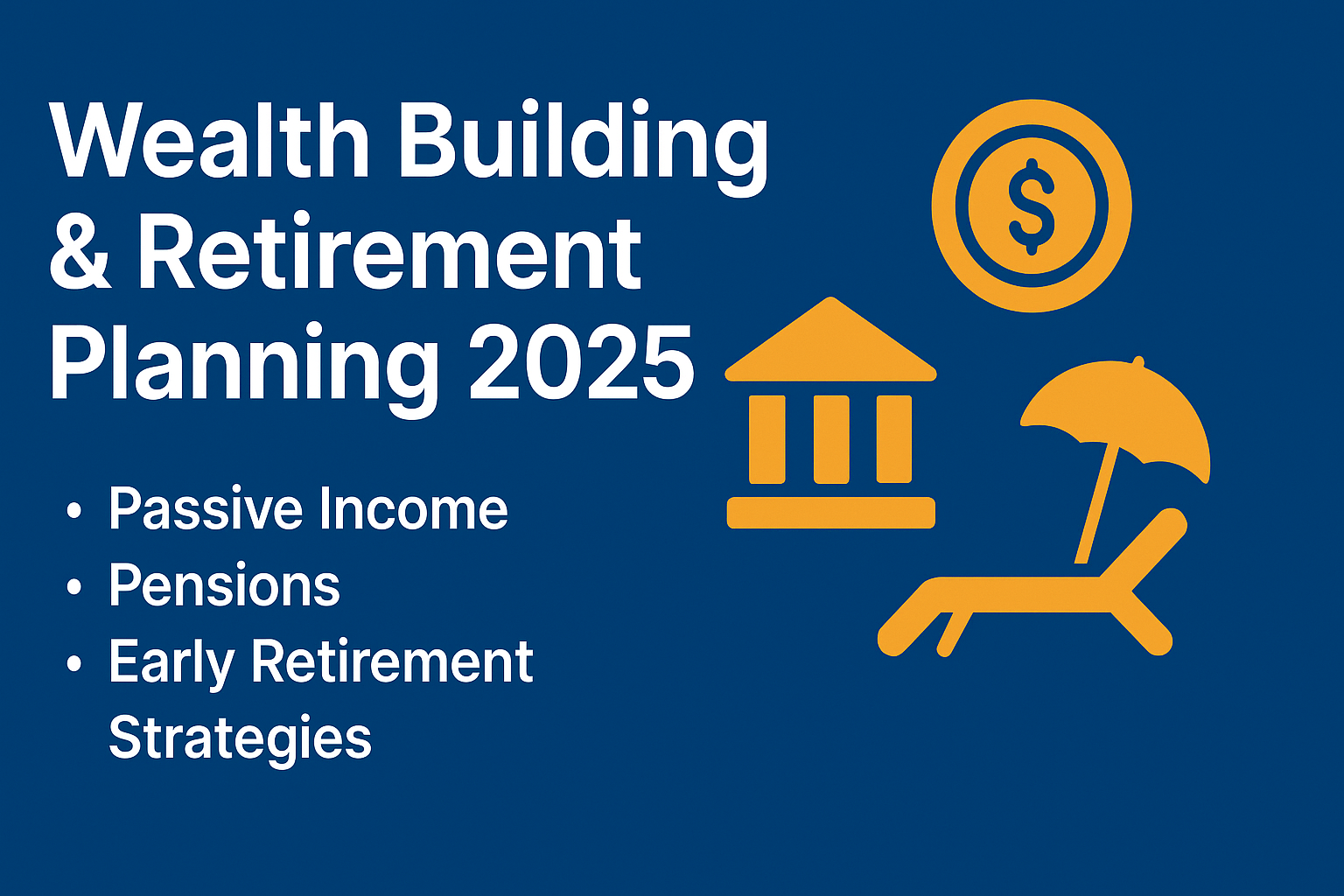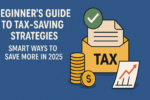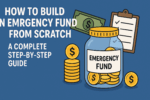Financial independence and retirement planning are no longer just concerns for the elderly—they are priorities for working professionals of all ages. With rising living costs, longer lifespans, and changing job structures, building wealth for a secure retirement is more important than ever. In 2025, people are turning toward passive income streams, pension plans, retirement funds, and early retirement strategies to ensure financial freedom.
This guide will walk you through practical ways to build wealth and plan for retirement with confidence.
1. Why Retirement Planning Matters in 2025
Many individuals underestimate how much money they will need post-retirement. According to financial experts, you’ll need at least 70–80% of your pre-retirement income to maintain your lifestyle. With inflation averaging 5–6% annually in India, a retirement corpus built early ensures you won’t outlive your savings.
Benefits of Early Retirement Planning:
- Financial independence without depending on family
- Peace of mind during medical emergencies
- Ability to pursue hobbies or travel after retirement
- Protection against inflation and rising healthcare costs
2. Passive Income – Building Wealth Beyond Salary
Passive income is money earned with minimal effort after the initial setup. It plays a vital role in retirement planning since it ensures continuous income even when you stop working.
Popular Passive Income Sources in 2025:
- Dividend Stocks & ETFs: Regular income from listed companies.
- Rental Income: Real estate investments provide monthly cash flow.
- Digital Assets: Blogging, YouTube, and online courses generate ongoing income.
- Peer-to-Peer Lending: Earn interest by lending money through online platforms.
- REITs (Real Estate Investment Trusts): Invest in real estate without buying property.
- Tip: Diversify across different passive income sources to minimize risk and maximize returns.
3. Pension Schemes & Retirement Funds
Pension schemes and retirement funds provide long-term security through regular contributions during your working years.
Top Retirement Options in India (2025):
- Employees’ Provident Fund (EPF): Mandatory for salaried employees; employer also contributes.
- Public Provident Fund (PPF): Government-backed scheme with 15-year lock-in and tax-free returns.
- National Pension Scheme (NPS): Market-linked returns with extra ₹50,000 tax deduction under Section 80CCD(1B).
- Atal Pension Yojana (APY): Provides a fixed monthly pension for unorganized sector workers.
- Private Pension Plans: Insurance companies offer annuity plans ensuring steady post-retirement income.
Average Returns in 2025:
- PPF: ~7.1% annually
- NPS: 8–10% market-linked
- EPF: ~8.25%
4. Early Retirement Strategies – FIRE Movement & Beyond
The FIRE movement (Financial Independence, Retire Early) has gained popularity among millennials and Gen Z. The idea is to save aggressively, invest wisely, and retire in your 40s or even 30s.
Steps to Plan for Early Retirement:
- Aggressive Savings: Aim to save at least 40–50% of income.
- Smart Investments: Diversify between equity, debt, real estate, and retirement funds.
- Cut Lifestyle Inflation: Differentiate between needs and wants.
- Build an Emergency Fund: Maintain 6–12 months of expenses separately.
- Health Insurance: Critical for avoiding medical expenses that can derail retirement plans.
- Pro Tip: Early retirement is possible only if you invest consistently in high-return assets while keeping debt low.
5. How Much Retirement Corpus Do You Need?
- To calculate your retirement corpus, consider:
- Current expenses × (1 + inflation rate) ^ years until retirement
- Expected lifespan after retirement (average 20–30 years)
- Medical and lifestyle costs
Example:
If your current monthly expenses are ₹50,000 and you plan to retire in 25 years with 6% inflation, you’ll need around ₹2.1 crore to sustain your lifestyle for 20+ years.
6. Wealth Building Through Investments
Investments fuel long-term wealth building. The right mix of risk and return ensures a strong financial base for retirement.
Best Investment Options in 2025:
- Equity Mutual Funds & SIPs: 12–15% long-term returns
- Fixed Deposits (FDs): 6–7% stable returns
- Gold & Sovereign Gold Bonds (SGBs): Hedge against inflation
- Real Estate: Both capital appreciation and rental income
- Index Funds/ETFs: Low-cost, diversified market exposure
Balanced Portfolio Mix (Sample):
- 50% Equity (stocks, mutual funds, ETFs)
- 20% Debt (FDs, bonds, PPF)
- 20% Real Estate/REITs
- 10% Gold or commodities
7. Key Mistakes to Avoid in Retirement Planning
- Starting Late: Delaying investments reduces compounding benefits.
- Relying Only on Pensions: Pension schemes may not keep up with inflation.
- Ignoring Healthcare Costs: Medical inflation is higher than general inflation.
- No Diversification: Putting all money into one asset class increases risk.
- Withdrawing Investments Early: Breaks compounding and reduces corpus.
Final Thoughts
Also Read : Fixed Deposit vs Recurring Deposit: Which is Better for Your Money in 2025?
In 2025, wealth building and retirement planning require a balanced mix of passive income, pension schemes, retirement funds, and early retirement strategies. Starting early, diversifying investments, and controlling expenses are the keys to achieving financial independence.
Remember: retirement is not the end of earning—it’s the beginning of living without financial stress. By planning wisely today, you can enjoy tomorrow with freedom and security.






